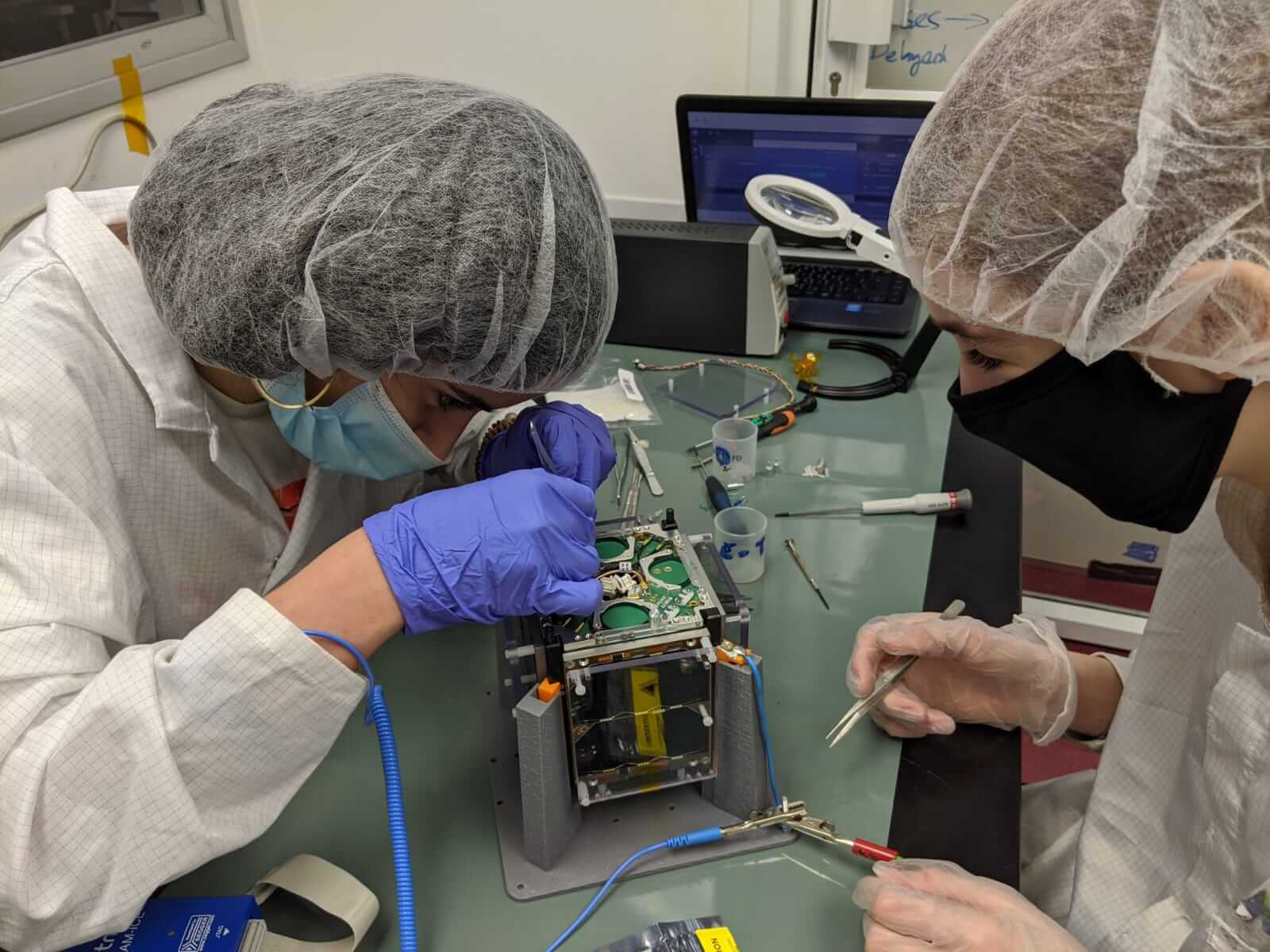The eight tiny satellites are part of a SpaceX launch that includes over a hundred nano-satellites from all over the world * The coordinator of the satellite trend at the Herzliya Science Center says in an interview with the Hidaan website that about 250 students from eight local authorities participated in the project

Tomorrow, eight student satellites from Israel will be launched into polar orbit on SpaceX's Falcon launcher. The eight tiny satellites are part of a SpaceX launch that includes over a hundred nanosatellites from all over the world, most of them, except for the Israeli ones, projects of students and commercial companies. In the operation known by SpaceX as Transporter-3, over a hundred microsatellites and nanosatellites for commercial and government customers will be launched into a sun-synchronized orbit.
The Tebel project - an acronym for "Students Build Satellites", was initiated and led by the Israel Space Agency in the Ministry of Science and Technology. All phases of the planning, development and construction of the satellite are done by the students under professional guidance and under the management of the Science Center in Herzliya.
The satellites are used for experiments in laser communication with the Earth. They contain retro-reflectors - optical components designed to absorb and reflect laser rays that hit them. In addition, the satellites are also used for radio amateur communication with the Earth.
Eight teams of male and female students from middle schools across the country participated in the project, 8 local authorities, from the social and geographic periphery, from the secular, religious and non-Jewish sectors, 8 authorities representing the entire Israeli social mosaic: Shaar Hanegev, Ofakim, Yeruham, Taiba, Nazareth, Ma'ale Adumim, Givat Shmuel and Kiryat Ata.
The names of the satellites
- T1OFK horizons
- T2YRC Yeruham
- T3TYB Taiba
- T4ATA Kiryat Ata
- T5SNG Shaar HaNegev
- T6NZR Nazareth
- T7ADM raises reds
- T8GBS Givat Shmuel
In each of the authorities, alongside the development and construction of the satellite, the students established a suitable infrastructure: a clean room for the construction of the satellite, for integration activities and for testing the satellites. Communication stations that will enable tracking of satellites, receiving telemetry and scientific data.
Even after the launch, the satellites will demonstrate communication capabilities with the ground stations built by the local authorities and will serve diverse tasks, some related to scientific research. The control, monitoring and processing of the data received from the satellites - everything will be done by the students. According to the plan, the launch should take place at 17:40 Israel time.
In an interview with the Hiden website, the coordinator of the satellite trend at the Herzliya Science Center, Sharon Meshal, said: Groups from eight authorities participated in the project, with each group building its own satellite. At the Herzliya Science Center, we also integrated schools without prior knowledge of the subject. The challenge was to teach both the teacher and the students to establish human and physical infrastructure in the schools. For three years we held regular meetings, further training and courses to train both the teachers and the students. Each group faced the challenge of designing the satellite starting with design and characterization, software development, construction and assembly of the satellite and tests, preparation for launch. Conducted planning surveys and received feedback from the professional team on their work."
"In the educational aspect, Meshal adds, "the program is groundbreaking in that, for the first time, students from all over the country and from all sectors of Israeli society are participating in a space project. The program allows them to take part in a real engineering project and experience learning that is different from the routine learning in schools. The project creates an active and attractive learning environment and contributes to the students' motivation and level of interest."
"They are exposed to every field of space engineering, face real problems and acquire real practical experience, working and thinking skills and interpersonal skills that will also contribute to them later in their career."
"For three years the students worked and invested. At the peak of the project, the corona virus broke out and we had to transfer all learning to Zoom, and the students were engaged in the task, and despite the stress of matriculation and all the changes that suddenly occurred in their lives, they managed to complete the task and meet the goal."
